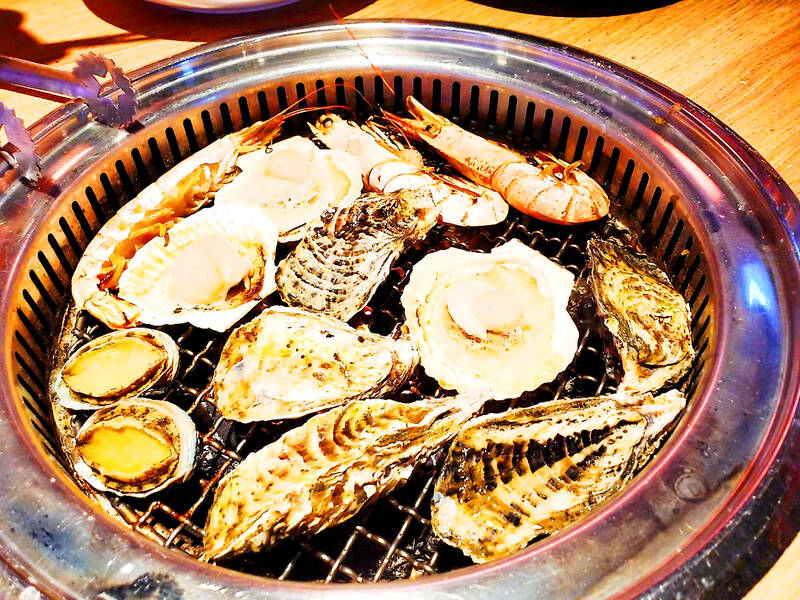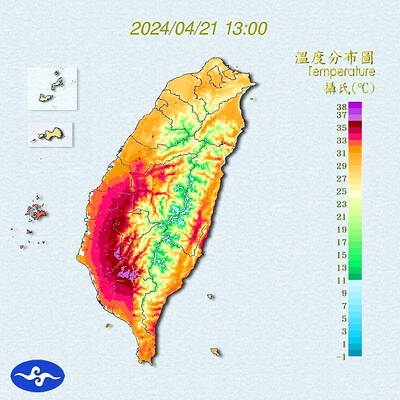A woman yesterday became Taiwan’s first confirmed domestic cholera case in two years after consuming raw oysters and shrimp, the Centers for Disease Control (CDC) said.
The 40-year-old woman from central Taiwan developed persistent diarrhea on Oct. 18, CDC Deputy Director-General Chuang Jen-hsiang (莊人祥) told a news conference.
She was admitted to hospital four days later, he said, adding that her condition had worsened, and she was experiencing vertigo, nausea and watery diarrhea.

Photo: Lin Hui-chin, Taipei Times
Doctors took a fecal bacterial sample, from which they detected signs of cholera, he added.
The CDC received the hospital’s report on Friday last week and its scientists found that the woman had cholera of the O1-Ogawa strain, he said.
The woman has a history of high blood pressure, cancer and stomach ulcers, and regularly takes strong stomach medicine, he said, adding that she had not traveled domestically or internationally in the weeks before contracting the disease.
The CDC determined that she contracted the disease from seafood, which she prepared and ate at home, Chuang said.
The Ministry of Health and Welfare has begun testing samples taken from the woman’s family members and tracing the source of contamination, he said, adding that the two people living with the woman have no symptoms.
Taiwan reported seven indigenous cholera cases in 2018, no cases in 2019, one case in 2020 and no cases last year, he said, adding that no imported cases have been reported in the past few years.
Cholera is an acute bacterial infectious disease with an asymptomatic period of two to three days, he said, adding that contaminated food or water are its main transmission vectors.
People with low or suppressed stomach acid levels, past stomach removal surgeries or a compromised immune system are more susceptible to the disease, while people with healthy digestive systems can ingest a comparatively large quantity of the bacteria without contracting the disease, Chuang said.
Vibrio cholerae, the bacterium that causes the disease, is typically found in dirty water, he said, adding that the seafood the woman ate might have been harvested from contaminated water.
The CDC recommends people to consume only fully cooked food and boiled water, arrange kitchens in a way that avoids the cross-contamination of ingredients, and wash their hands frequently, he said.

A group of Taiwanese-American and Tibetan-American students at Harvard University on Saturday disrupted Chinese Ambassador to the US Xie Feng’s (謝鋒) speech at the school, accusing him of being responsible for numerous human rights violations. Four students — two Taiwanese Americans and two from Tibet — held up banners inside a conference hall where Xie was delivering a speech at the opening ceremony of the Harvard Kennedy School China Conference 2024. In a video clip provided by the Coalition of Students Resisting the CCP (Chinese Communist Party), Taiwanese-American Cosette Wu (吳亭樺) and Tibetan-American Tsering Yangchen are seen holding banners that together read:

UNAWARE: Many people sit for long hours every day and eat unhealthy foods, putting them at greater risk of developing one of the ‘three highs,’ an expert said More than 30 percent of adults aged 40 or older who underwent a government-funded health exam were unaware they had at least one of the “three highs” — high blood pressure, high blood lipids or high blood sugar, the Health Promotion Administration (HPA) said yesterday. Among adults aged 40 or older who said they did not have any of the “three highs” before taking the health exam, more than 30 percent were found to have at least one of them, Adult Preventive Health Examination Service data from 2022 showed. People with long-term medical conditions such as hypertension or diabetes usually do not

POLICE INVESTIGATING: A man said he quit his job as a nurse at Taipei Tzu Chi Hospital as he had been ‘disgusted’ by the behavior of his colleagues A man yesterday morning wrote online that he had witnessed nurses taking photographs and touching anesthetized patients inappropriately in Taipei Tzu Chi Hospital’s operating theaters. The man surnamed Huang (黃) wrote on the Professional Technology Temple bulletin board that during his six-month stint as a nurse at the hospital, he had seen nurses taking pictures of patients, including of their private parts, after they were anesthetized. Some nurses had also touched patients inappropriately and children were among those photographed, he said. Huang said this “disgusted” him “so much” that “he felt the need to reveal these unethical acts in the operating theater

Heat advisories were in effect for nine administrative regions yesterday afternoon as warm southwesterly winds pushed temperatures above 38°C in parts of southern Taiwan, the Central Weather Administration (CWA) said. As of 3:30pm yesterday, Tainan’s Yujing District (玉井) had recorded the day’s highest temperature of 39.7°C, though the measurement will not be included in Taiwan’s official heat records since Yujing is an automatic rather than manually operated weather station, the CWA said. Highs recorded in other areas were 38.7°C in Kaohsiung’s Neimen District (內門), 38.2°C in Chiayi City and 38.1°C in Pingtung’s Sandimen Township (三地門), CWA data showed. The spell of scorching